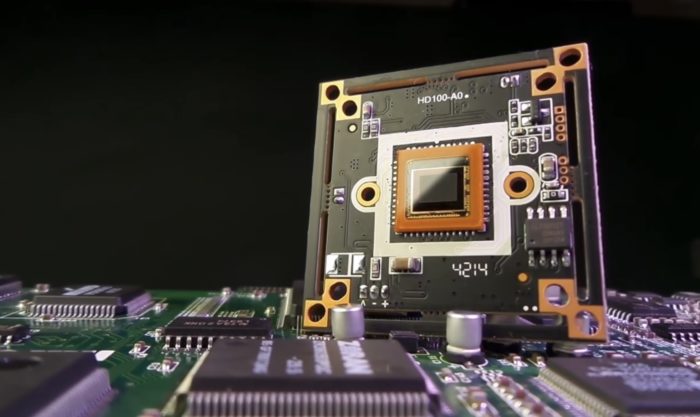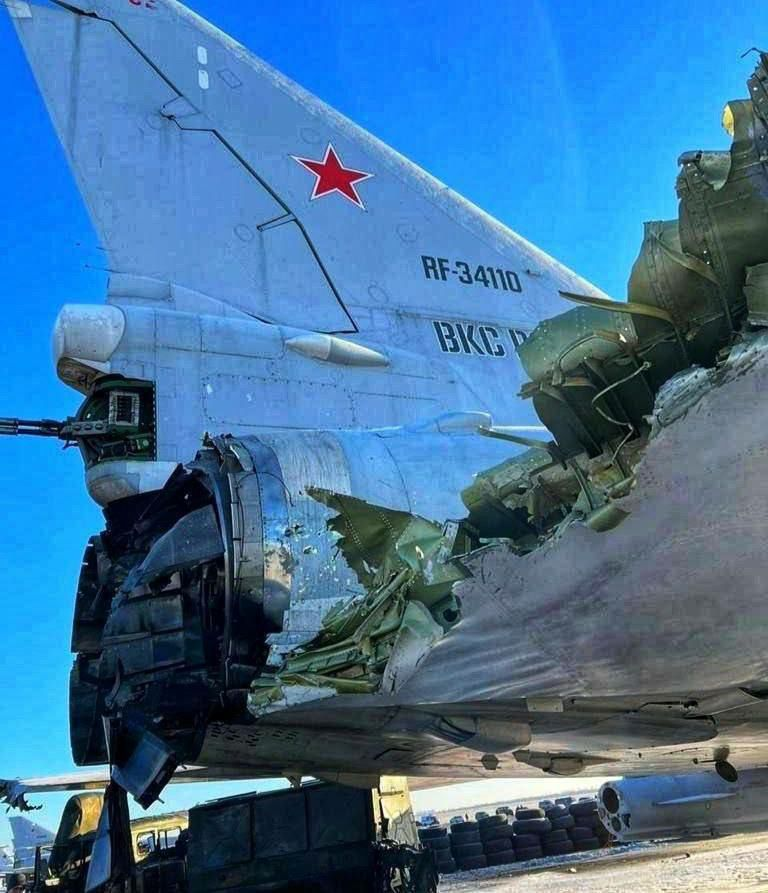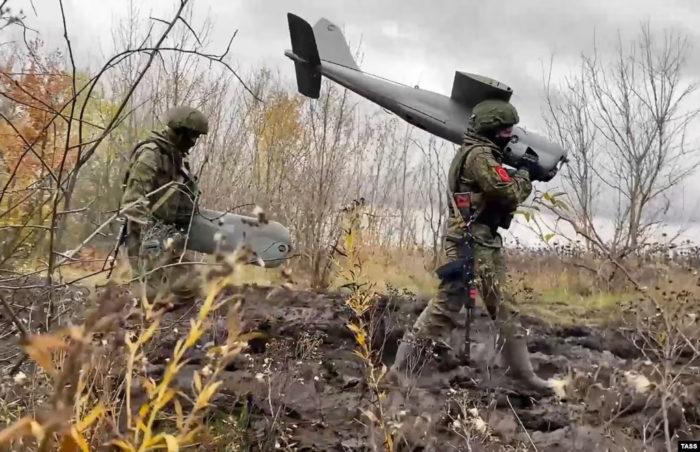Since 24 February, Russia has been terrorizing Ukraine with missile strikes for 11 months, despite the widespread belief that its stockpiles of advanced precision missiles are dwindling. Russia has depleted half of some missile stocks since February while continuing production. In response to Russia's occupation of Crimea and fomenting war in eastern Ukraine, some companies have found alternative routes or ignored export restrictions since 2014. It has helped Moscow prepare for the invasion of Ukraine in 2022.
On Monday, 5 December 2022, a report was released by the UK-based Conflict Armament Research (CAR) independent group that tracks ammunition and weapons used in various conflicts. It is the CAR team's fourth research trip to Kyiv at the Ukrainian security services (SBU) invitation. The arrival preceded the 23 November attacks on Ukraine's critical electricity and water systems infrastructure.
In four research trips to Kyiv following the Russian invasion of 2022, the investigators discovered that most of the advanced Russian military gear, namely radios and laser finders, were built with Western semiconductors.
The above corresponds with the August Silicone Lifeline report by RUSI that examined Russian military systems and identified 450 Western-made components. At least 318 of these components were from US-based companies, with Analog Devices and Texas Instruments named as primary suppliers.
It is despite the fact that the EU and the US have imposed export restrictions on dual-use items since 2014, following Russia's occupation of Crimea and the war in eastern Ukraine. Evidence suggests that some companies have developed alternate strategies for business in the sizable Russian market. Others have outright disregarded restrictions and openly cooperated with Russia. It has significantly contributed to Moscow's preparation for the full-scale invasion of Ukraine in 2022 since the modern weapon systems used by Russia depend on Western-manufactured electronics and chips.
However, the 2022 invasion forced many businesses and governments in the West to reconsider their relations with Russia. Many Western companies, including dozens of US companies, announced ceasing operations and withdrawal from the Russian market. Most of these companies have publicly stated their support for Ukraine. An NGO) focusing on the investigative analysis of Russia's sanctions circumvention and elevation of sanctions' efficacy, Trap Aggressor sent dozens of emails to such companies and kept track of their responses.
Another Ukrainian initiative, the LeaveRussia project of the Kyiv School of Economics (KSE), made a database of companies doing business in Russia, with 17 companies so far announcing their withdrawal.
Still, a few remaining companies continue doing business in Russia. According to the KSE database September data, On Semiconductor (US) and Harting (Germany), responsible for producing missile electronics, did not cease their activities. Harting is continuing to retain its office in Russia.
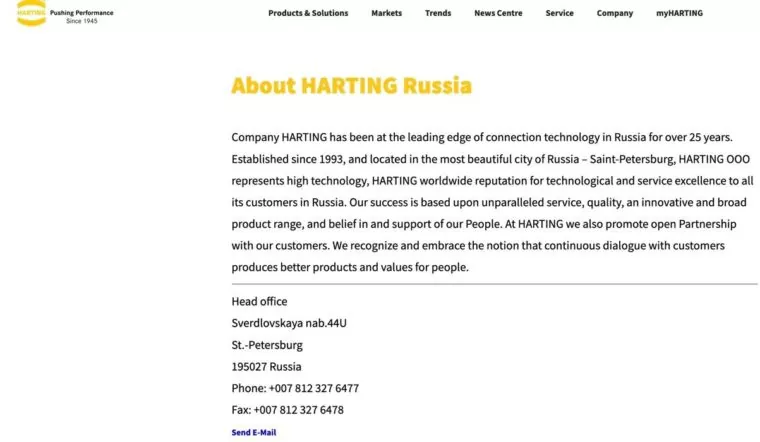
Furthermore, the official exit or withdrawal of the companies does not necessarily result in the immediate disappearance of the components they produce from the Russian market.
Since October, Russia has launched hundreds of missiles targeting primarily civilian infrastructure across Ukraine. Analysts at Trap Aggressor examined the Russian electronics distributors, their websites, and social networks that continued until recently to announce new deliveries of foreign parts.
In fact, the most recent intelligence information states that since the start of the war, Russian military plants have produced approximately 40 new missiles per month, equating to 240 precision Kh-101 cruise missiles and 120 Kalibr cruise missiles in total. This is even though it is widely believed that Russia's stockpiles of its most modern precision missiles are running low, according to General Skibitsky.
There are conflicting reports about Moscow's ability to access Western technology and its capacity to manufacture new tech and precision missiles. Furthermore, it is unclear how many of these weapon systems remain currently in storage. However, cutting the legal and parallel imports of crucial Western-made technology would significantly impede Russian war efforts.
Russia's double whammy: concurrent war on global trade relations and a call for bids on foreign components
In mid-October, Trap Aggressor's analysis of imported components highlighted a couple of specific tenders. These tenders are just a few credible proofs of the Russian MIC's high demand for and reliance on foreign technologies.
For instance, the Uralvagonzavod (UVZ), Russia's primary tank manufacturer, purchased reduction gearboxes through a tender in March 2022. The requirements stipulated that it is particularly preferred the German company Getriebebau NORD GmbH & Co. KG or a comparable manufacturer must manufacture the reduction gearbox for one of the items.
Another example is the request for only Polish pressure transducers, brand-new and made by a specific Polish company, Aplisens.

It is unknown which companies supplied the components because the tender documents did not list the suppliers' names, addresses, or phone numbers. However, the signing of the contract followed both tenders. As a result, the UVZ has highly likely obtained its Polish and German components.
Geography and origins of Western components in Russian weaponry
Earlier analysis prepared by Trap Aggressor as part of the Institute for War and Peace Reporting (IWPR) project with the support of the Royal Norwegian Ministry of Foreign Affairs systematized information from Ukrainian and foreign sources about electronic components discovered in Russian military equipment to provide a more comprehensive picture of this dependency.
Trap Aggressor found 39 types of Russian weapons and equipment with foreign processors, modules, and chips by analyzing battlefield evidence in Ukraine. Tanks, airborne combat vehicles, fighter jets, night vision devices, binoculars, and radios are some examples.
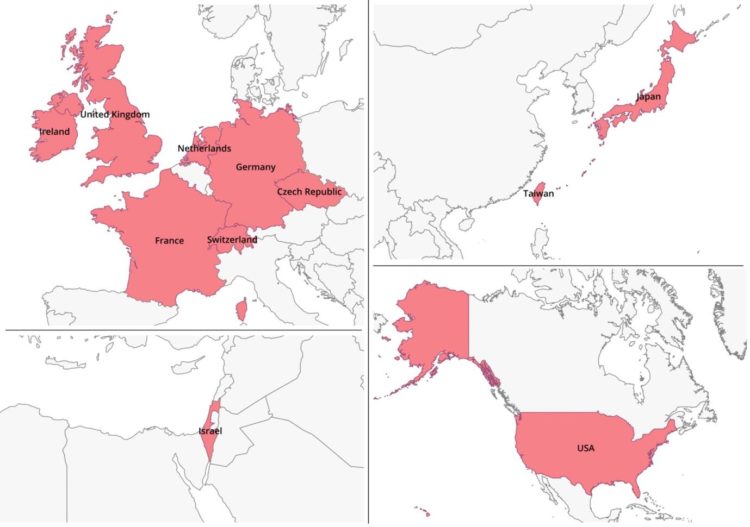
There are 69 companies, ranging from Japan to the US and Germany, that supply the components. Trap Aggressor analysts have compiled a list of these companies.
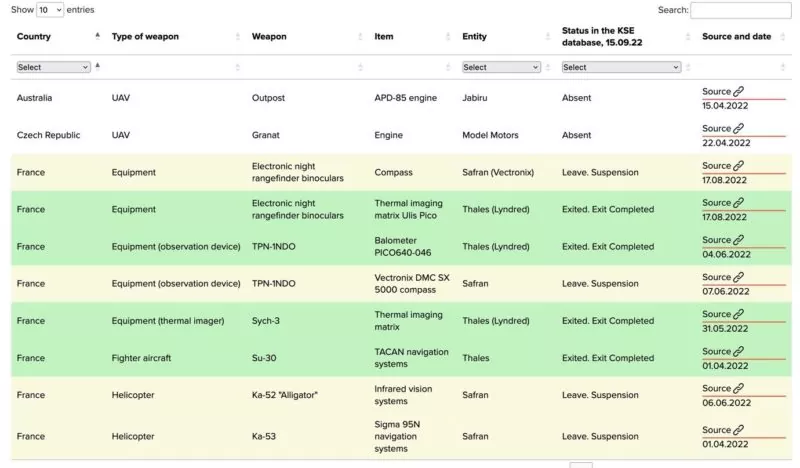
Western components in Russian cruise missiles, an MLRS, a UAV, and a helicopter
According to Ukraine's Defense Ministry, Russia has used half of some of its missile stocks while continuing to produce several types following the invasion of Ukraine on 24 February.
Four enemies of the russian missile arsenal:
brilliant Ukrainian air defense forces; inept russian missile forces; sanctions;
time.
Let's demilitarize the terrorist state to live in peace! pic.twitter.com/ndttmXCc22— Oleksii Reznikov (@oleksiireznikov) November 22, 2022
Ever since Sergey Surovikin assumed the command of the Russian invasion forces in October, Russia has carried out up to eight waves of massive attacks, with more than 400 missile strikes targeting Ukraine's critical civilian infrastructure and the power grid. We will review three of the missiles above, as well as the Kamov Ka-52 Alligator attack helicopter, Orlan-10 UAV, and the Tornado-S MLRS.
9M727 Iskander cruise missile
While the Iskander 9K720 system is most known for launching ballistic missiles, it can also fire the 9M727 and 9M728 cruise missiles.
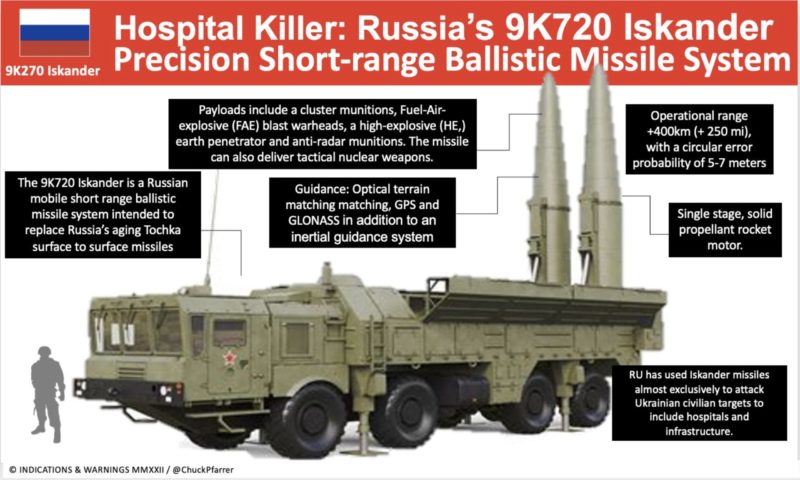
According to Ukraine's Ministry of Defense, Russia fired more Iskander cruise missiles over nine months of its invasion than of any other variety, overwhelmingly targeting civilian infrastructure – 829. At the same time, Russia has managed to produce 48 of them since 24 February.
One of Russia's most advanced weapons, the 9M727, has a range of 400 km and an accuracy of 5-7 meters.
According to Trap Aggressor analysis, a Russian 9M727 Iskander cruise missile contains 20 foreign components.
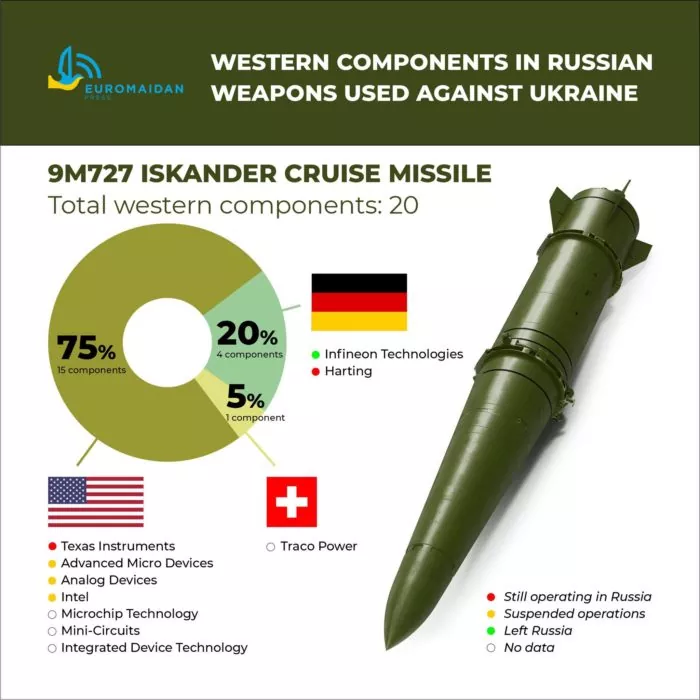
15 out of these components are US-made.
Out of these 15 components, Texas Instruments used to supply the most (eight) components for Iskanders:
- two microchips (TMS 320C30GEL JG-22S2LGB and DSP TMS320C25GBA)
- two digital signal processors (TMS320 C25GBA and TMS320 C30GEL)
- one processor (Zarya computer)
- one microcircuit logic and voltage translation (Baget-62-04 computer)
- one signal processor (Baget-62-04 computer)
- transceivers (Baget-62-04 computer).
The remaining seven US-made components are:
- dual-port static RAM (Zarya computer) by Advanced Micro Devices
- field-programmable gate array (Baget-62-04 computer) by Advanced Micro Devices (Xilinx)
- 12-bit A/D converter manufactured (SN-99 system) by Analog Devices (Linear Technology Corporation)
- microchip Altera cyclone (Baget-62-04 computer) by Intel (Altera).
And the last three US-made components are by companies that are absent from the Russian market, namely:
- the voltage regulator (Baget-62-04 computer) by Microchip Technology
- microchip core & wire transformer (Baget-62-04 computer) by Mini-Circuits
- boot sector flash memory (Zarya computer) by Integrated Device Technology.
The remaining five EU-made components are:
- four German-made components:
- CMOS static RAM (Zarya computer) by Infineon Technologies (Spansion Ink)
- static random-access memory (Baget-62-04 computer) by Infineon Technologies (Spansion Ink)
- one CMOS static RAM (Zarya computer) by Infineon Technologies (Cypress Semiconductor)
- ethernet cabling (Zarya computer) by Harting. This company remains operational on the Russian market with an office in St.-Petersburg. - one microchip DC/DC converter (Baget-62-04 computer) from Switzerland
Russian radios, missiles, and surveillance devices use Advanced Micro Devices' microchips. They have not announced their intention to withdraw from Russia. However, in March, the company announced the suspension of its sales.
Interestingly, the Russians themselves explained how the US components reached Russia after 24 February. Speaking to the Russian newspaper Vedomosti, Dmitry Kurashev, CEO of Russian information security company Usergate, explained that foreign components, including those by Texas Instruments, are now supplied to Russia via "alternative channels."
Kalibr cruise missile
The Kalibr cruise missile is another famous Russian anti-civilian weapon and the backbone of the Russian Navy's land attack capability. Surface combatants and submarines in the Black Sea regularly fire Kalibr missiles at Ukraine. Its range is 1,400 km presenting a threat to every Ukrainian city.
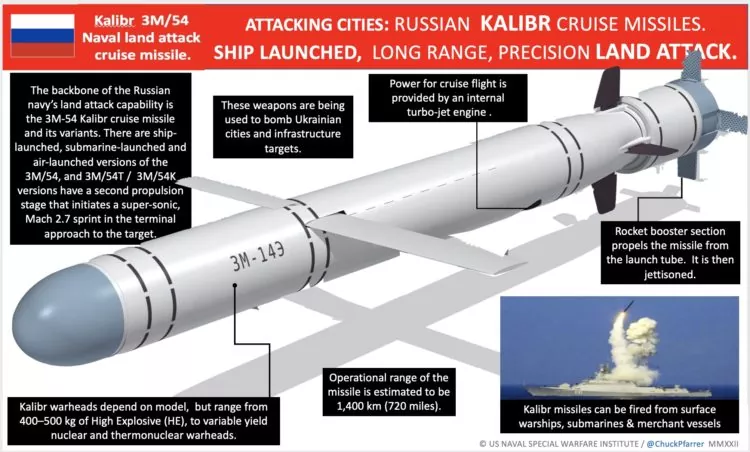
According to Ukraine's Ministry of Defense, Russia has used 391 Kalibr missiles during nine months of war while producing 120.
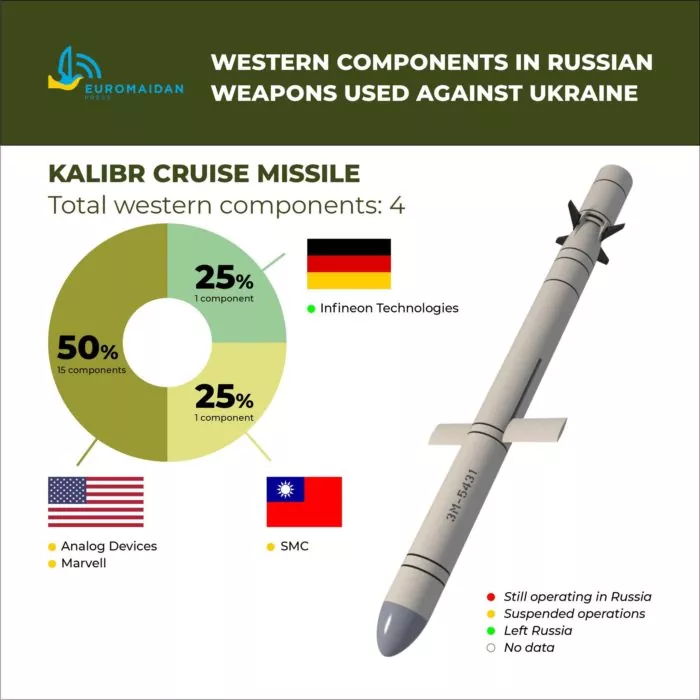
The KSE database indicated four foreign components in Kalibr:
- two US-made by Analog Devices (AD9218BSTZ-105 MSPS 3 V DUAL A/D CONVERTER) and Marvell (88E1111-BAB2 ULTRA GIGABIT ETHERNET TRANSCEIVER);
- one from Germany by Infineon Technologies (Cypress Semiconductor) (CY7C1381KV33-133AXI 18MBIT PARALLEL STATIC RAM);
- one from Taiwan by TSMC (microprocessors "Elbrus" and "Baikal"), Kinzhal also has them.
Kh-101 air-launched cruise missile (ALCM)
Kh-101 ACLM is Russia's most advanced tactical land attack cruise missile. The Tu-95MS strategic bombers are equipped to carry and fire Kh-101 missiles. With a range of 4,500 km and an accuracy of five meters, this ACLM, like the Kalibr, poses a threat to every city in Ukraine.
According to Ukraine's Ministry of Defense, since 24 February, Russia has employed 132 Kh-101 missiles and produced 120 of these ACLMs.
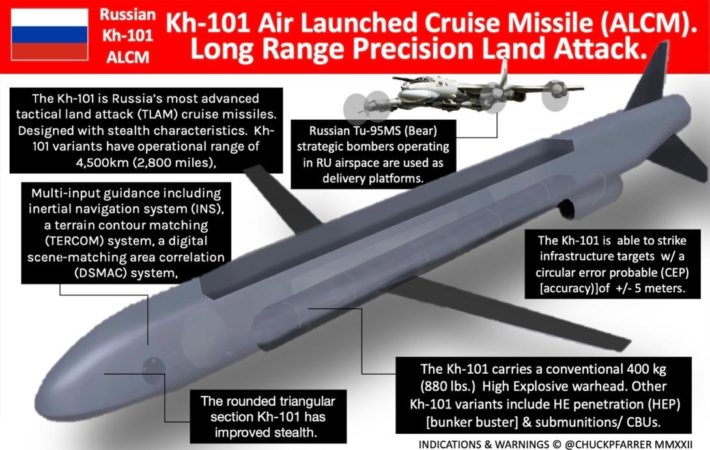
According to Ukrainian weapons investigators, the Russian Kh-101 cruise missiles, widely used in the late November attacks, were manufactured as recently as October. It is months after the West imposed sanctions to deprive Moscow of foreign components.
The preceding suggests several probabilities. First, despite sanctions, Russia has found and possibly continues to find alternative means to acquire the electronic matériel. Second, Russia has amassed substantial components stocks before the war.
CAR's latest weapons investigation in Kyiv could not determine whether the studied Kh-101 missiles reached their targets or air defense shot them down. Nonetheless, it has become evident that these Kh-101 missiles bore a 13-digit numerical sequence. According to the CAR investigators, the first three digits indicate the missile factory code, followed by three digits indicating the missile version and a two-digit manufacture date. The subsequent five numbers represent the missile's production batch and serial number.
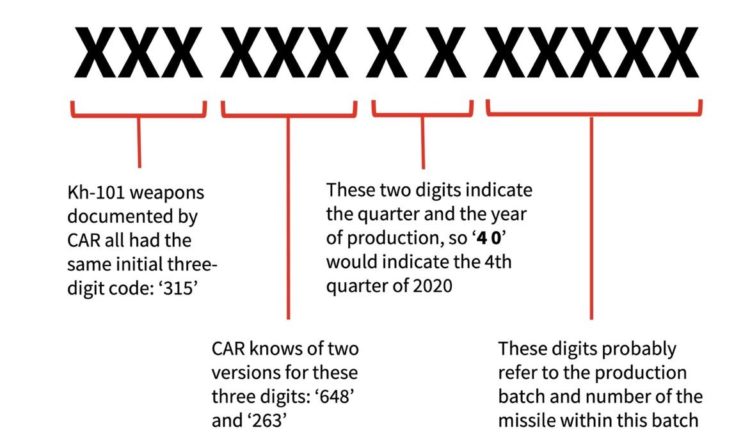
Additionally, the research conducted by the Polish journalist Piotr Butkowski fully corresponds with the CAR's investigation. Consequently, the first three digits are usually "315." It is the manufacturing facility code of the Raduga-15
company in Dubna, near Moscow.
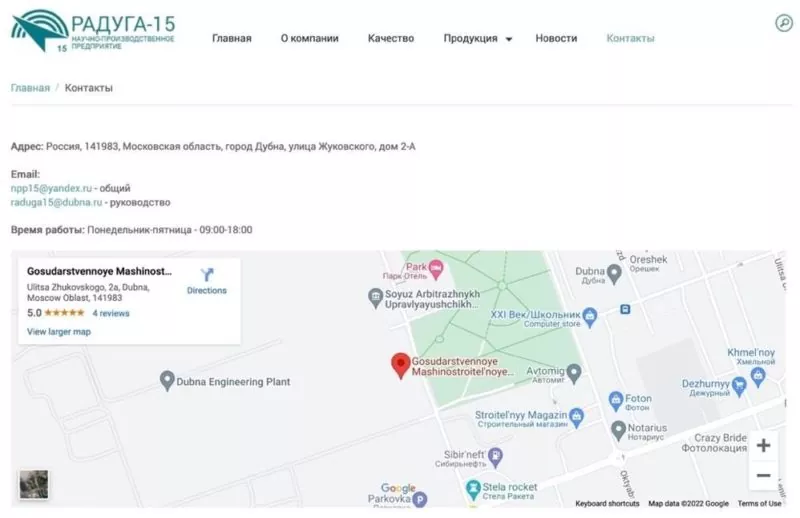
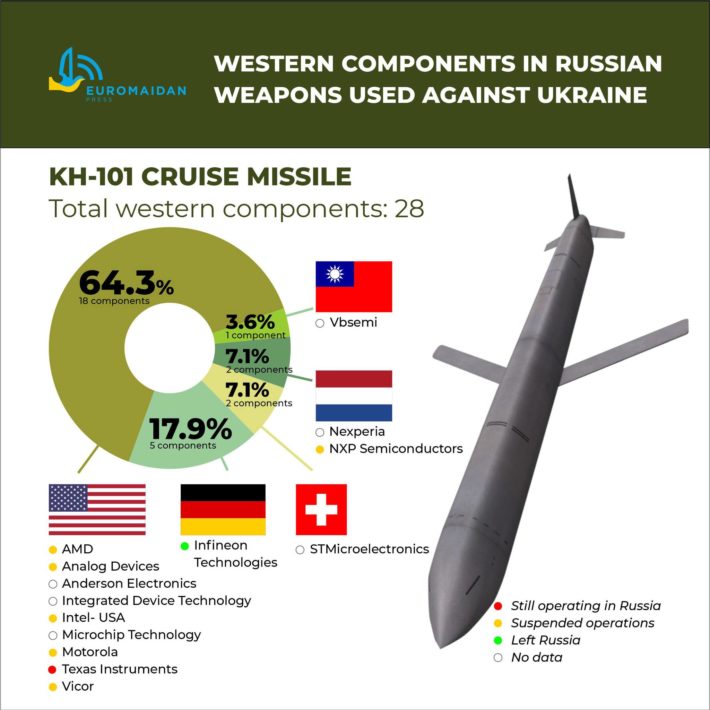
The Kh-101 missile contains 28 foreign components, as per the KSE database:
- 5 German-made by Infineon Technologies (two by Cypress Semiconductor, three by Spansion Ink);
- 18 US components, including:
- five by Texas Instruments
- three by Analog Devices (along with two by Analog Devices (Linear Technology Corporation)
- two by Integrated Device Technology
- two by Intel
- one by Advanced Micro Devices (Xilinx)
- one by Anderson Electronics
- one by Microchip Technology
- one by Motorola
- one by Vicor
- one by Zilog. - two components manufactured in the Netherlands: one shifting bus switch by NXP Semiconductors (Philips Semiconductor) and one bus transceiver by Nexperia;
- two Switzerland-made by STMicroelectronics (one quad flat package and 44-lead thin quad flat packages);
- one Taiwan-made by Vbsemi (mosfet).
Tornado-S 9K515 multiple launch rocket system (MLRS)
In February 2022, Infineon Technologies announced that it had ceased supplying Russia with electronics as a show of support for Ukraine. However, these components were used in Russia's latest generation of the 300mm multiple launch rocket system (MLRS), Tornado-S 9K515, deployed to Ukraine on 21 November. In March, Intel also suspended shipments but did not announce the closure of its Russian office. Additionally, Iskander and Ka-52 helicopters make use of Intel chips.
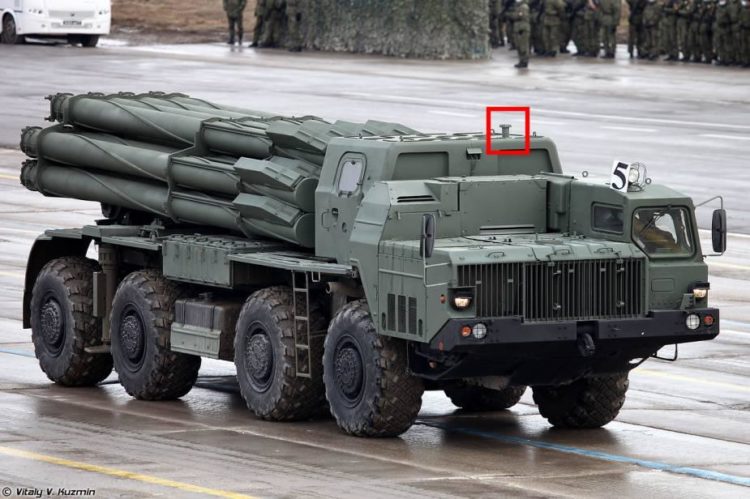
The Tornado-S MLRS can fire guided rockets with a maximum range of 120km. According to the Russian Defense Ministry, it is a vastly improved version of the BM-30 Smerch. It can destroy command centers, weapons and ammunition depots, supply points, communication hubs, air defense systems, and other facilities.
The Motovilikhinskie Zavody (Motovilikha Plants) PJSC in Perm designs and manufactures Russian Tornado-S MLRSs. The plant specializes in field artillery guns, mine-throwers, self-propelled artillery, and MLRS.
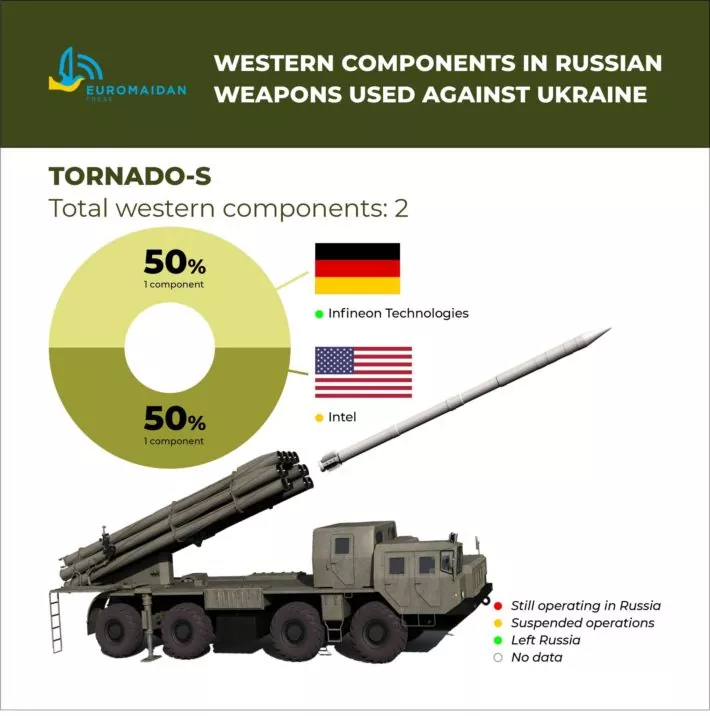
According to the Trap Aggressor analysis and KSE's database, Tornado-S contains several foreign components.
These include German high-speed static random-access memory (SRAM) modules by Infineon Technologies (Cypress Semiconductor). This company has reportedly withdrawn from Russia.
Furthermore, it has the US-made field-programmable gate array (FPGA) of the gyroscope by Intel (Altera Corporation). This company has reportedly suspended its activities.
Orlan-10 reconnaissance UAV
Russia also employs the relatively sophisticated yet inexpensive Orlan-10 reconnaissance UAV. Russian forces use it to direct artillery fire on Ukrainian positions and carry payloads.
Military experts consider it one of the most critical components of the Russian Army's lethality in Ukraine. Russian artillery can strike within three minutes of an Orlan-10 being above Ukrainian positions, leaving targets with almost no time to escape the fire zone.
Without the UAV, the response time is 20 minutes, giving Ukrainians enough time to relocate. With an operational radius of 120 km and flying at altitudes up to 5 km, it is especially challenging for Ukrainian forces to shoot down using MANPADS.
Western companies supplied components for Russian Orlan drones despite sanctions – media
Designed and manufactured by Russia's Special Technology Center Limited Liability Company, under sanctions since 2016, the Orlan is chock full of western electronics. According to a RUSI report, the Special Technology Center purchased Western components worth more than $25 mn through a chain of intermediaries.
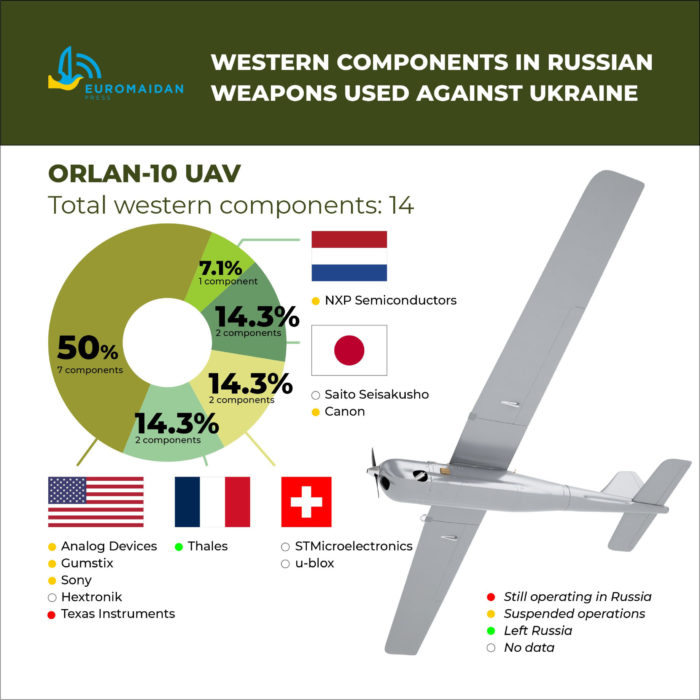
Western companies produce 14 components of Orlan-10, according to Trap Aggressor.
Seven in the USA:
- Fast RF transceiver and Universal transceiver microchip by Analog Devices (2)
- video camera by Sony
- IronSTORM-BY computer-on-module by Gumstix
- Gimbal motor by Hextronic
- Power management modules and WiFi link modules by Texas Instruments (2)
Five in Europe:
- Microcontrollers and modules by STMicroelectronics and u-blox (Switzerland)
- Pressure sensors by NXP Semiconductors (Netherlands)
- Thermal imaging matrixes by Thales (Lyndred) (France)
Two in Japan:
- Engine by Saito Seisakusho
- Camera by Canon
Kamov Ka-52 Alligator helicopter
One of the Kremlin's latest combat aircraft, the Ka-52 is considered one of the most capable and deadly attack helicopters. In Ukraine, Ka-52s have seen "more intensive use than the other fleets, both by day and especially at night, on all fronts in Ukraine," according to RUSI report.
According to the previous CAR September field report, the Ka-52 Alligator helicopter also contains several foreign components.
CAR team has also identified shared components between Ka-52 helicopters, several Russian UAVs, multiple cruise missiles, and communication and navigation equipment contained in other Russian military hardware. Thus, the onboard computers of the Ka-52 helicopter and the Kh-101 missile contain identical foreign-made components.
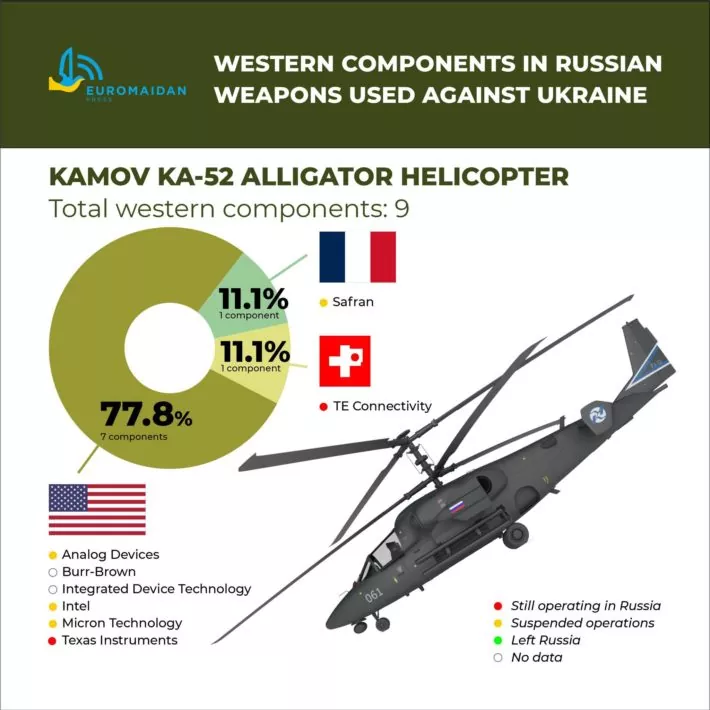
According to the KSE database, the Ka-52 helicopter has nine foreign-made components:
- seven US-made microchips, namely by:
-TE Connectivity
-two by Analog Devices-five by Burr-Brown, Integrated Device Technology, Intel (Altera), Micron Technology, and Texas Instruments. - a microchip by TE Connectivity (Switzerland), which remains on the Russian market as per the database
- infrared vision systems by French company Safran.
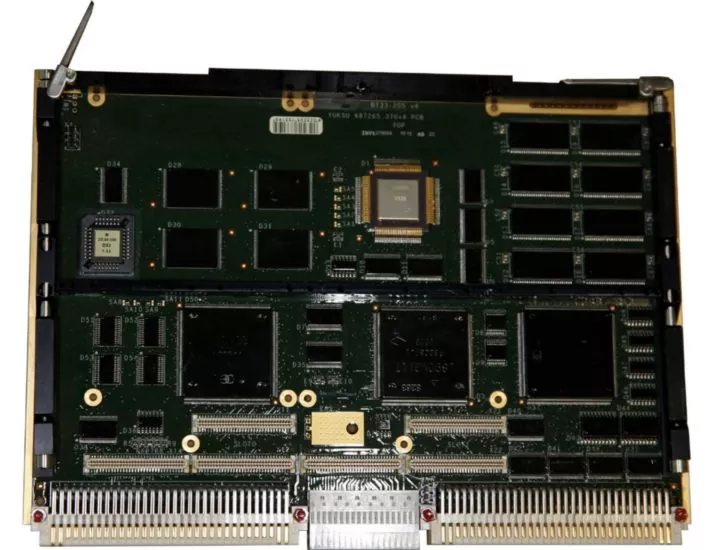
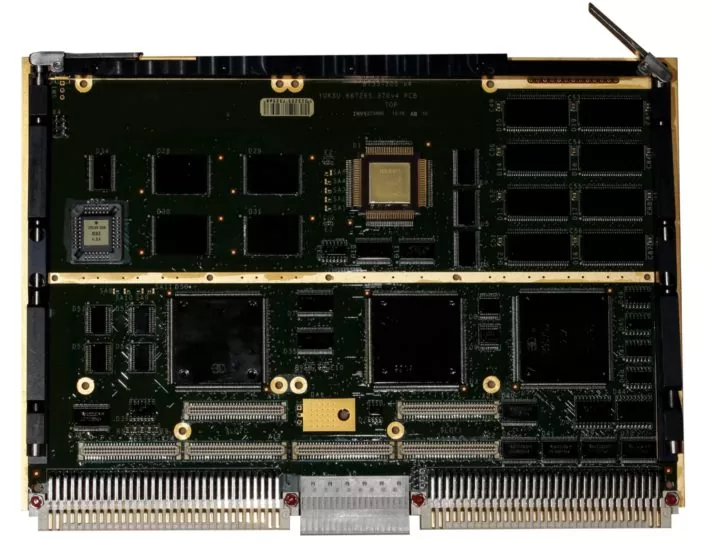
New supplies or simply leftovers?
According to late October Trap Aggressor's analysis, the examination of electronics distributors, whose websites and social media pages continued to announce new import deliveries, revealed the VKontakte page of the component seller company "Promelectronics," regularly offering "special deals" on products throughout the summer. These offers included chips, microcontrollers, and other electronics from Infineon Technologies, Analog Devices, Microchip Technology, Murata Manufacturing, Nexperia, and TDK Electronics.
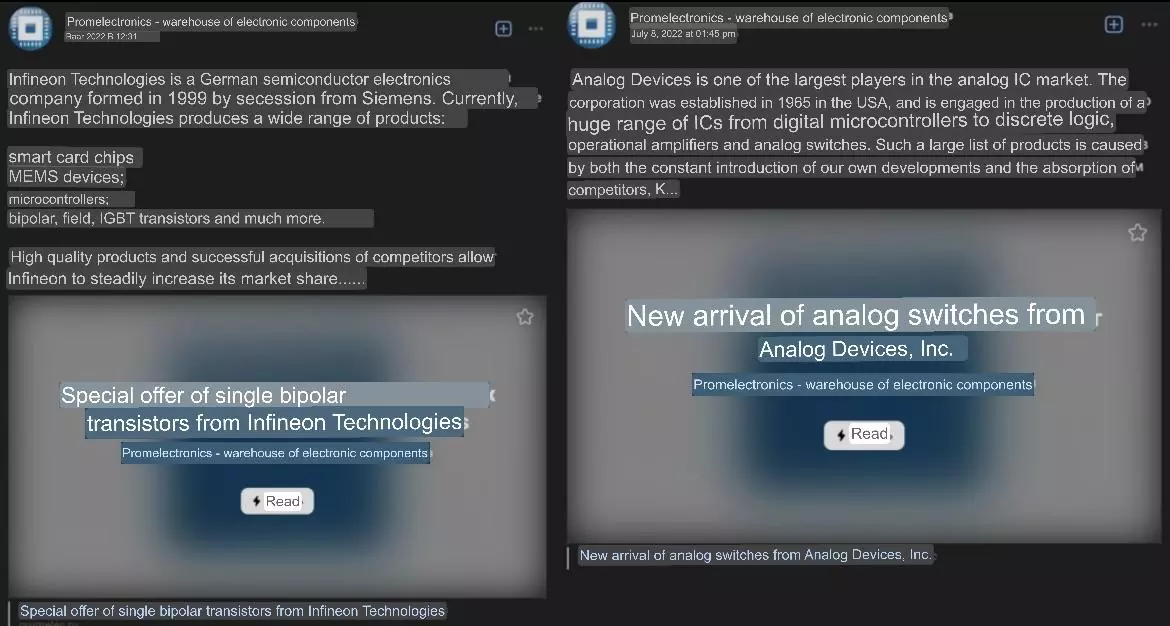
It could have been the distributor disposing of warehouse leftovers. Nonetheless, as in this case or the late November and December attacks on Ukraine, one should not entirely rule out new supplies to Russia. Infineon Technologies later responded to an inquiry from Trap Aggressor, expressing its support for Ukraine. The company also clarified that its last deliveries to Russia occurred in March. Additionally, it regularly issues distributors instructions prohibiting the supply of its products to Russia.
The ongoing war in Ukraine demonstrates that Russia's MIC has been inundated with foreign technologies for decades. The RUSI's report, Trap Aggressor's analysis, and the latest CAR research on the most recent attacks on the country all together support this. Therefore, Ukraine and its allies should exert even greater pressure on companies whose electronics and equipment are heavily used by the Russian military.
A need for a twofold approach: intensive surveillance and military action
The further logical steps in stifling the oxygen supply to the Russian war machine should be twofold. Both political and military measures will be required. One can already observe these tendencies in international policies.
First, the US and its allies must further tighten the sanctions already imposed on Russian arms manufacturers and component suppliers. The imposition of additional measures could significantly hinder Russia's acquisition of the microelectronics it requires.
Additionally, one could incorporate the proposed approach by the Yermak-Mc Faul group. It is an international working group on sanctions against Russia. The proposed initiative is a "Cold War 2.0" approach to tighten sanctions further and raise their efficacy. It could include instituting a special trade regime to even further restrict trade and access to Western technologies until Russia transitions to a peaceful foreign policy.
One must also keep in mind that the US has already implemented measures requiring chipmakers to obtain a license from the US Department of Commerce before exporting specific chips that one can utilize in modern weapon systems. The DOC has also issued license restrictions prohibiting US citizens from working in China's chip manufacturing industry. It could jeopardize their US citizenship.
Furthermore, despite previous setbacks, the EU finally implemented the ninth package of sanctions against Russia on 16 December. The latest package is not only focusing on the tightening of already existing sanctions but also making provisions for additional measures and specifically secondary sanctions. Secondary sanctions, given the recent incident with the Lady R ship in South Africa, are unquestionably the best course of action.
The above implies that it is no longer mere circumvention of restrictive measures and assistance considered a criminal offense. The concealment of blacklisted individuals as the ultimate beneficiaries of the funds has also joined the list of criminal offenses. Thus, individuals and companies aiding in the concealment of assets through the shell and offshore companies, various networks, and other means using different jurisdictions also fall under the Damocles sword. Moreover, legal advisory and tax consulting services to sanctioned individuals will also now be considered a criminal offense.
Therefore, secondary sanctions will further minimize Russia's acquisition of foreign components through third-party hubs. The closure of even a few avenues or loopholes for evading sanctions will collapse the Russian defense industry.
The identical placement of computer chips on multiple circuit boards with various production dates but the same manufacturer makes it easier to target and destroy supply networks with stricter sanctions. Additionally, obsolete components are integrated at a low level.
The New York Times quotes NASA employee Arsenio Menendez stating that Russia's technology is mainly outdated. "It is essentially the same as an Xbox 360 gaming console, and it appears that anyone can build a copy. A group of electrical engineering undergraduates could construct this."
Russia's cruise missiles may be riddled with inaccuracy due to the medley of components used to construct its guided weapons. Incorrect processing of satellite signals by rather unusual GPS units can cause a cruise missile to miss its target by a significant margin.
The second aspect of the twofold approach necessitates military measures.
Considering the significant development in the 11-month war and the Pentagon's tacit approval of Ukraine's possible attacks on targets inside Russia, military action is another comparable option. There is no longer an insistence in the air that Ukraine should not strike Russian military targets.
The provisional proposed measures may include targeting production facilities. For example, the missile production plants and other military and strategic targets. In fact, one may already currently observe a series of strikes on Russian Dyagilevo (Ryazan Oblast) and Engels (Saratov Oblast) strategic airbases dubbed a real "game-changer" in the war.
Thus, immediately severing the dragon's very head is the only logical and reasonable expectation.
Despite the continued use of the same escalation calculus, the fear of escalation has changed. During the last 11 months of the war, Ukraine has demonstrated its full range of capabilities. As usual, Russia's greatness proved to be an illusion, and its incapacity to produce anything independently. Currently, all that is required is to block the Z to Russian war machine using the several concrete, practical means at our disposal.
This report is based on Trap Aggressor analysis, RUSI's Silicone Lifeline report, and CAR's September and November investigative research on weaponry and components analysis.
Related:
- Western companies supplied components for Russian Orlan drones despite sanctions – media
- Terror from the sky: a guide to Russian missiles used against Ukraine and how to stop them
- The mysterious weapons behind Ukraine strikes on Russian airbases
- Recent strikes show Ukraine can conduct long-range operations on Russia without western equipment -FT
- Three things Ukrainian drone strikes on Russian strategic airbases change in the war

